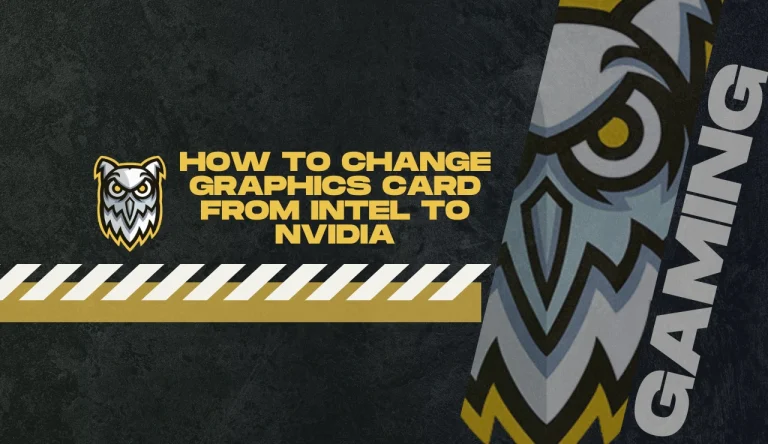What Does Ti Mean In Graphics Cards
If you’re a gaming enthusiast or a professional designer, you’ve probably come across the term ‘Ti’ when researching graphics cards. But what does Ti mean in graphics cards?
In the world of graphics cards, ‘Ti’ stands for Titanium and signifies an enhanced version of the base model. This designation indicates that the Ti variant offers improved performance and features compared to its non-Ti counterpart.
The inclusion of Titanium in the name implies durability, strength, and power – characteristics that translate into better graphics rendering capabilities.
When considering a graphics card purchase, understanding the significance of Ti is crucial as it can greatly impact your gaming or design experience.
In this article, we will delve into the performance differences between Ti and non-Ti models, explore factors to consider when choosing a graphics card, and help you make an informed decision for your specific needs.
So let’s dive in and unravel what Ti truly means in graphics cards!
Understanding Graphics Card Terminology
If you’re trying to understand graphics card terminology, it’s important for you to grasp the meaning of ‘TI’ in graphics cards.

When it comes to graphics card features, ‘TI’ stands for Titanium and represents a higher-end variant of a particular model. It signifies that the graphics card has been enhanced with additional power and performance compared to its non-TI counterpart.
The term ‘TI’ is commonly used by NVIDIA, one of the leading manufacturers of graphics cards.
Other common graphics card abbreviations include ‘GT’ for Graphics Technology, which denotes an entry-level or mid-range model, and ‘GTX’ for Gaming eXtreme, which indicates a high-performance gaming-oriented graphics card.
Understanding these abbreviations will help you make informed decisions when choosing a suitable graphics card for your needs.
Exploring the Significance of “Ti”
To truly understand the significance of ‘Ti’ in graphics cards, you need to delve into its hidden depths. ‘Ti’ stands for Titanium, which implies that the graphics card is a superior and more powerful version than its non-‘Ti’ counterpart. This distinction is important because it represents a higher level of performance and capability.
Here are some key points to help you grasp the significance of ‘Ti’:
- ‘Ti’ vs. Overclocked Models: While both ‘Ti’ and overclocked models offer improved performance, ‘Ti’ cards are specifically designed by the manufacturer to deliver higher clock speeds and better overall performance out of the box.
- Branding in Other Tech Industries: The use of ‘Ti’ branding extends beyond just graphics cards. In other tech industries, such as smartphones or audio equipment, manufacturers may also use ‘Ti’ to indicate enhanced features or premium quality.
- Enhanced Features: Graphics cards with ‘Ti’ branding often come with additional features like increased memory bandwidth, more CUDA cores, or improved cooling solutions. These enhancements contribute to better gaming experiences and smoother multimedia rendering.
- Price Premium: Due to their superior performance and added features, ‘Ti’ graphics cards usually come at a higher price point compared to their non-‘Ti’ counterparts. It’s essential for consumers to weigh these benefits against their budget constraints.
- Future-proofing: Investing in a ‘Ti’ graphics card ensures that your system will handle demanding games and applications for an extended period before becoming outdated. The extra power provided by these cards allows for smoother gameplay at higher resolutions and frame rates.
Understanding the significance of ‘Ti’ in graphics cards can help you make an informed decision when selecting a GPU that suits your specific needs and requirements.
Performance Differences in Ti and Non-Ti Models
Get ready to experience the noticeable performance differences between ‘Ti’ and non-‘Ti’ models in graphics cards. When it comes to benchmark comparisons, Ti models tend to outperform their non-Ti counterparts in various aspects.
These include higher clock speeds, more CUDA cores, and increased memory bandwidth. The impact of Ti models on gaming performance and frame rates is significant. With their superior capabilities, Ti cards can handle demanding games at higher resolutions and settings, providing smoother gameplay and improved visual quality.

In benchmark tests, you’ll often find that Ti cards achieve higher frame rates compared to their non-Ti counterparts, resulting in a more immersive gaming experience. So if you’re looking for top-notch performance in your graphics card, opting for a Ti model will undoubtedly deliver impressive results.
Factors to Consider When Choosing a Graphics Card
Consider the factors that are essential for your needs when choosing a graphics card, as they’ll greatly impact your overall gaming experience. To make an informed decision, take into account the following four key factors:
- Price comparison: Graphics cards vary in price, so it’s important to compare different options and determine which one fits within your budget.
- Compatibility with other hardware: Ensure that the graphics card is compatible with your existing hardware, such as your motherboard and power supply. Check the specifications of both the graphics card and your other components to avoid any compatibility issues.
- Performance requirements: Assess what level of performance you need from a graphics card based on the games or applications you plan to use. Consider factors like resolution, refresh rate, and graphical settings to ensure smooth gameplay or efficient rendering.
- Future upgradability: If you plan on upgrading your system in the future, consider whether the graphics card allows for easy upgrades or if it may become outdated quickly.
By considering these factors, you can choose a graphics card that meets your needs while providing excellent value for money.
Making an Informed Decision for Your Gaming or Design Needs
When making an informed decision for your gaming or design needs, it’s crucial to prioritize factors like price, compatibility, performance requirements, and future upgradability.
When comparing the cost effectiveness of ti and non ti graphics cards, it’s important to consider the additional features and performance boost that ti models offer.
While ti graphics cards tend to be more expensive than their non ti counterparts, they often provide better performance in demanding tasks such as gaming or design software.
These models typically have higher clock speeds, more CUDA cores, and increased memory bandwidth, resulting in smoother gameplay and faster rendering times.
However, it’s essential to evaluate whether the specific gaming or design software you use benefits significantly from these enhancements before investing in a ti model.
Conducting thorough research and consulting benchmarks can help you determine if the extra cost is justified for your specific needs.
Frequently Asked Questions
Conclusion
In conclusion, understanding the meaning of ‘Ti’ in graphics cards is crucial for making an informed decision. The ‘Ti’ designation signifies a higher-performance model within a specific graphics card series. These Ti models often come with increased clock speeds, more CUDA cores, and improved power delivery systems compared to their non-Ti counterparts.
When choosing a graphics card, it’s important to consider factors such as your budget, desired performance level, and compatibility with your system. By carefully evaluating these factors, you can select the right graphics card that meets your gaming or design needs.






